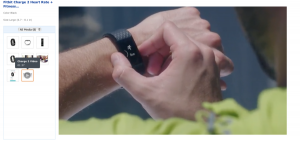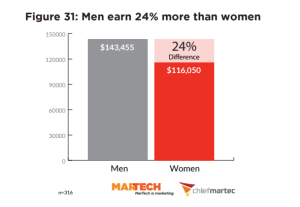— May 23, 2018

Learn how to write killer social media updates in this post!
In today’s marketing landscape, social media is a must for businesses big and small. It’s is a glorious strategy with unmatched potential that helps level the playing field, giving small and medium-sized organizations a chance to reach out and compete against the big players.
While anyone can post on social media all day long, if you want to get results and compete in the big leagues it’s important to know how to create updates that stand out from the noise and strike a chord with your customers.
Keep reading to learn how you can write killer social media updates that stand out.
4 Steps to Create Shareable Social Media Updates
- Know Your Audience: In order to create content your audience will share, you first need to know who your audience is. CoSchedule recommends you ask yourself these questions:
- What problems can my product or service solve for customers or clients? This question answers why your company exists and why people need it.
- What does my current client base look like? Consider demographics like age, gender, location, family structure, income and education level.
- Who is my competition and what does their customer look like? You’re likely to have a similar audience base as your competition. If you can identify their customers you’ll be off to a strong start in understanding your own.
- What can my customers gain by choosing me versus my competition? What is your niche? Determining the unique needs your business fulfills will help you narrow down who your audience is to the core.
When you review the responses and actions of your followers, create a unique personality for your brand and provide value to your audience, your content will become more shareable and reach a wider group of users.
Types of Social Media Updates

It’s important to consider the type of posts you want to use depending on the content you are going to share. Are you wondering what type of updates there are? Keep scrolling to find out.
As you start drafting your social media updates, consider the types of posts you want to use depending on the content you are going to share. Are you wondering what type of updates there are? Poynter breaks them down; here’s a quick list with a short description of each one:
- Explain the news: Explain new and interesting information and news within your industry that your audience can use.
- Provide a list: Readers like numbers and lists; content that sharees a list is easy to read and lets your audience know what to expect.
- Ask a question: Questions spur curiosity and engagement, but it’s best to avoid questions that sound like click-bait.
- Use a quote: Quotes offer a nugget of insight from the story that leaves the reader wanting more, which in turn makes for posts and tweets that get clicks
- Create urgency: Convey urgency to engage with your content by sharing news that is timely or just breaking, or offering a limited time coupon, discount or giveaway.
- Produce an emotional reaction: Express a strong feeling or opinion; people react emotionally to content on social media. Aim for emotions like optimism,
nostalgia or happiness to leave followers with a positive connection to your brand. - Demand an action: If there is a specific action you want your readers to take, don’t beat around the bush; be straightforward and ask them to act on your update.’
No matter the type of updates you choose to use, it’s important that you use strong, vivid words that paint a picture in the mind of your audience. Also, remember to use names, places and things that people will recognize. In general, users are hesitant with the unknown; relating your posts to items they are familiar will make them more willing to engage with your posts.
Social Media Updates and Business Related Keywords
While your social media posts don’t directly affect your standing on search engines, you still need to consider keywords in your social media efforts. People are using social media sites, like Facebook, to discover new businesses, products and services. When using social media for this purpose they search using the same method as a search engine – with specific words in mind that a relative to what they are looking for.
The Kissmetrics article, Help Customers Find You: How to Use Keywords on Your Social Networks, shares the following insight on how you can create a list of the best keywords for your social media:

An important part of writing killer social media updates is considering which words people use in their search efforts that you want to include in your updates.
- Common Terms: Think about the words that a consumer would use to describe your business. If someone doesn’t know your company name or that your company even exists, what would they type in the search bar of a social media site to find it?
- Desired Association: When thinking of keywords to use on your social media channels, consider words that you want to be associated with your business. For example, Three Girls Media is associated with “custom, quality content” and thus, “custom, quality content” are keywords we use on social media when it fits with our updates.
- Competition Check: Once you think you have a good keyword, don’t forget to check it on social media by typing it into the search bar to see what comes up. If the search comes up with a lot of your competition, try to think of keywords that are more specific.
- SEO Keywords: What keywords do you use for your website and online advertising? Chances are when you came up with these words you completed search engine optimization SEO research (or at least you should have!). Use this information to your advantage and include them in your social media when possible.
- Prepare for Different Social Media Sites: Some keywords won’t work for all social media sites. Kissmetrics offers this example in their article:
“If you’re an electronics company, think of keywords related to popular product models that will be useful on your Facebook page. For your LinkedIn account, you may want to consider keywords to attract talent like “engineers”, “developers”, “jobs”, and “positions”.
Specific Keywords for the Top Social Media Sites:
While it’s a good idea to know which keywords you want to use explicitly for your business, in general, there are words and phrases that you can use on each social media site that will also help drive engagement.
Facebook: In an article titled, 25 Power Words to Drive More Engagement with Your Social Campaigns, on JeffBullas.com, updates that use the following words on Facebook grab attention and get the most engagement:
- Post
- Comment
- Take
- Submit
- Would
- When
- Where
- Tell us
- Should
- Discount
- Only
- Because
- Now
Twitter: On Twitter, according to JeffBullas.com, the power words you can use in your updates to boost engagement are:
- ReTweet
- Check out
- Blog
- Post
- How to
- Top
- Social
- Follow
- You
- Help
- Great
- Share
Instagram: When it comes to keywords, Instagram is a little different from Twitter and Facebook. On this platform, you’ll want to make sure your keywords are used as hashtags as that is how users typically for new content. Beyond using the tips from above when deciding on your business specific keywords, the following are the top hashtags on the site according to Hubspot:
- #love
- #instagood
- #me
- #cute
- #tbt
- #photooftheday
- #instamood
- #iphonesia
- #tweegram
- #picoftheday
A general word of caution in relation to using keywords: Only use the words listed as they are relevant to your content and business. Improper use of keywords will turn your posts into click-bate and damage your social media credibility – which can have a significant impact on your business.
In summary, posting on social media may seem like an easy task that doesn’t require much thought or planning, but in reality, there’s a lot to it. The best social media marketers take the time to strategically plan and create their social media updates. Deciding the type of update they will use, how to convey their message and which keywords are going to have the biggest impact to achieve their goals are part of the process to writing killer social media updates.
Digital & Social Articles on Business 2 Community
(15)








